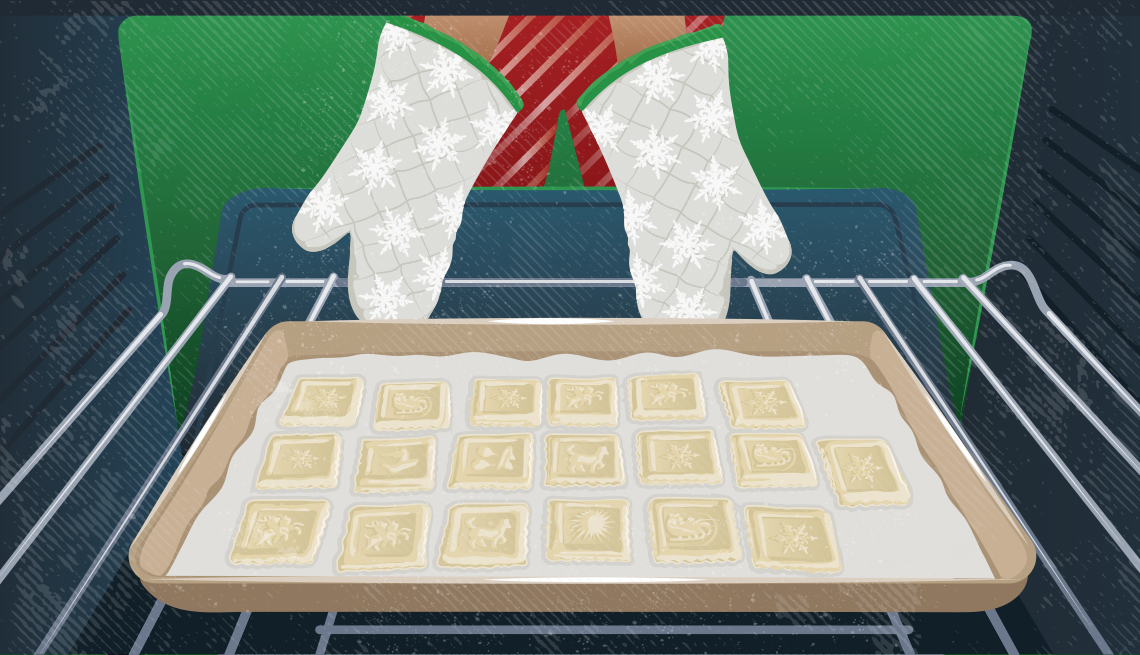
- Select a language for the TTS:
- UK English Female
- UK English Male
- US English Female
- US English Male
- Australian Female
- Australian Male
- Language selected: (auto detect) - EN
Play all audios:
If you’re looking for a difficult cookie, the springerle delivers. They require intricate hand-carved wooden molds to make. You can’t just use stuff you have around the kitchen. Collecting
the molds is a whole other discourse. Among springerle aficionados, there are those who use resin molds (amateurs), those who use only wood (old school) and those who use special rolling
pins (lazy). Really, just forget the rolling pins. If you want a lot of blobby springerles fast, OK. But the point of springerles is the incredible detailed designs that can be achieved only
with molds. They’re little works of art. Modern molds have your typical holiday scenes — Santa, sleighs, bells, reindeer and other kitsch. Old, wooden German molds, however, have grim,
moralistic lessons taken from the Bible and fairy tales, like Der Struwwelpeter (slovenly Peter) and his long fingernails, or Cruel Frederick whipping his rocking horse. These are the molds
I prefer, and the weirder the better. Some of my antique molds include: a peasant woman holding a strangled chicken, Prussian soldiers on horseback, avenging angels, children with shovels
and a disembodied head. Hunting for unusual molds is part of the joy of springerles. And imagine the fun you’ll have at cookie swaps. _Is that a strangled chicken?_ SHARING THE LOVE Of
course, you can’t give these creations to just anyone. I mostly bake them for my family, but every now and then I find a kindred spirit. One time, Paul and I were invited to a Christmas
party by our gracious neighbor Linda. Afterward, I wrote a thank-you note and left some springerles at her door. Paul said, “I thought you were thanking her, not punishing her.” Springerles
must be light and eggy on the inside but firm on the outside to retain their designs. Tracy Schorn She immediately wrote back to say she hadn’t had springerles since her Midwestern
childhood. And what fond memories they brought back. A friendship was born. Linda’s now part of my exclusive Springerle Appreciator Society, and I give her cookies every Christmas. She, in
turn, sends me every article she has ever read on springerles. The other person I bake them for is my Aunt Patti, 77, who is a staunch Christmas cookie traditionalist. For as long as I can
remember, she has made springerles every holiday, along with gingerbread, Aunt Mildred’s sugar cookies, Aunt Hazel’s Zimtsterne, almond crescents and walnut bars. The rotation never changes.
These recipes take a generation to learn and perfect. Who has time for experimentation? My Aunt Patti’s springerle recipe is translated from the original German. It’s the one I use, and at
age 56, I’ve spent the last 20 years trying to match her cookie prowess with varying degrees of success. She’s the person I call when my dough is too sticky, or not sticky enough. We
compare methods. I’ve always been the novice, and the recipient of her cookies. But last year hip surgery sidelined her baking, so I sent her my springerles. “Nice lift. I see you didn’t
roll the dough out too thin,” she said. “Nope. I learned that lesson.” “Good texture,” she said. This is high praise. A springerle must be eggy and light on the inside, but firm on the
outside, to retain the print design. “Your sister said they were too soft,” I said. “Not the batch you sent me,” she said.








